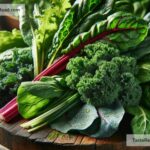Why Overripe Fruits Taste Different: Unraveling the Sweet Mystery
If you’ve ever bitten into an overripe banana or a squishy peach, you might have noticed that they taste quite different compared to when they’re perfectly fresh. Some people enjoy the overly sweet flavor, while others find it unpleasant or even strange. But have you ever wondered why overripe fruits taste this way? The answer lies in biology, chemistry, and how fruits change as they mature. In this blog, we’ll explore why overripe fruits taste different in simple terms, so the next time you take a bite, you’ll have a deeper appreciation for what’s happening inside that fruit.
What Happens When Fruits Ripen?
Fruits start out green, hard, and often sour or tasteless when they grow on trees and plants. This is because they are not yet ready to eat—it’s their way of protecting themselves from being eaten too soon. However, as fruits ripen, they undergo a natural chemical process that makes them sweeter, softer, and more appealing. These changes are driven by enzymes, which are tiny proteins in fruits that speed up chemical reactions.
During ripening:
– Starches in the fruit break down into sugar, making the fruit taste sweeter.
– Acids decrease, making the flavor less sour.
– The fruit softens as its cell walls break down.
– The aroma compounds change, giving off that sweet, fruity smell.
When a fruit is perfectly ripe, it often strikes a balance between sweetness, texture, and flavor. But what happens when it ripens too much? That’s when things start to become interesting—and a little weird.
Why Do Overripe Fruits Taste So Sweet?
The main reason overripe fruits often taste sweeter is that the fruit has continued breaking down its starches into sugar. Think of starch as a big, complicated molecule that your body can’t taste very well. Enzymes within the fruit break these starches into simpler sugars like glucose and fructose, which are much easier for your taste buds to detect. The longer this process goes on, the sweeter the fruit gets.
For example:
– A perfectly ripe banana has a mild sweetness, but an overripe banana might taste sugary, almost like candy.
– Similarly, overripe mangoes or peaches tend to taste much sweeter than usual.
In some cases, the sugar content can increase so much that the fruit starts to feel syrupy. If you’ve ever noticed how overripe fruits sometimes have a sticky texture, it’s likely because of the high sugar concentration.
Sour, Funky, or Fermenting: The Flip Side of Overripeness
Not all overripe fruits go straight to sugary goodness. Sometimes they develop flavors that are sour, tangy, or “off.” This happens because overripe fruits are essentially starting to decompose. Microorganisms like bacteria and yeast, which are all around us, begin to feed on the fruit’s sugar. As these tiny organisms work, they produce other chemicals, including alcohol and acids, which can change the flavor of the fruit.
Have you ever smelled an overripe fruit that had a faint alcoholic or vinegary scent? That’s fermentation! Fermentation is the same process used to make wine, beer, and vinegar, but in the case of fruits, it often happens naturally when they’re left too long. Some people enjoy this slightly funky taste in fruits like pineapple, but for others, the tangy or fermented flavor can be too much.
Overripe Fruits Get Mushy—Here’s Why
Texture plays a huge role in how fruits taste. As fruits overripen, their cell walls, which give them structure and firmness, break down. This process makes fruits softer and sometimes mushy. For example, an overripe pear or avocado might feel almost slimy when you eat it. While some people find this texture unappetizing, others enjoy the creamy consistency of overripe fruits like bananas in smoothies or baked goods.
Do Overripe Fruits Have Any Benefits?
Believe it or not, overripe fruits aren’t all bad. In fact, they have their own special uses. Because of their high sugar content and soft texture, overripe fruits are perfect for making desserts, jams, and smoothies. Bakers love overripe bananas for making banana bread, as their sweetness enhances the flavor. Similarly, overripe peaches can be turned into a delicious fruit compote or pie filling.
Not only that, but overripe fruits often contain more antioxidants than their less ripe counterparts. Antioxidants are healthy compounds that help protect your body from damage caused by harmful molecules. So eating overripe fruits in moderation can be a tasty and nutritious choice.
Should You Eat Overripe Fruits?
The decision comes down to personal preference and the type of fruit. Some fruits, like bananas and mangoes, can taste great even when they’re overripe. Others, like strawberries or grapes, may become unpleasantly sour or moldy. Always check for soft spots, bad smells, or visible mold before eating overripe fruits. If they don’t seem safe or fresh, it’s better to toss them out.
Final Thoughts
Overripe fruits taste different because they’ve undergone extra changes in their sugars, acids, and enzymes. Sometimes, these changes make the fruit sweeter and softer, while other times, they can lead to sour or fermented flavors. While not everyone likes the taste or texture of overripe fruits, they can still be useful for cooking and baking. So the next time you pick up a squishy piece of fruit, take a moment to appreciate the fascinating science behind its flavor. Who knows—it might just end up being your new favorite snack!


